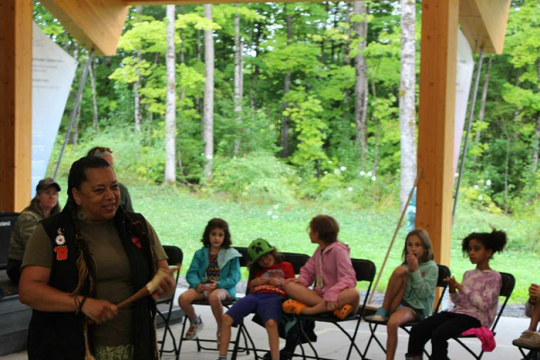How can congregations make their worship experience welcoming to prospective members and visitors? Attendees addressed that question in a recent workshop at the URJ’s Hadrachah Seminar, where lay leaders of small congregations gathered to learn to lead worship services and certain lifecycle events in order to strengthen their congregations.
Though Had’rachah participants came from congregations with either one clergy member on their staff or no clergy at all, the suggestions that stemmed from their discussion can benefit congregations of every size in making their worship services more welcoming. Here are six ways your congregation can make sure all attendees feel comfortable and included during worship services:
- At services, strategically seat long-time members next to guests. Jim Nallick of Congregation Beth Shalom in Bozeman, MT, suggests seating engaged members near guests during services. This way, those in the know can signal to newcomers the correct page numbers and assist them throughout the service as needed. This practice can be especially helpful during b’nai mitzvah services, when many of the people attending services are visitors to the congregation.
- Know who’s in the room and lead your service accordingly. Rabbi Michael Weinberg of Temple Beth Israel in Skokie, IL says that, as a service leader, he is mindful of who is in the room so that he can provide appropriate instructions for them. He explains that if only “regulars” are in attendance at a Shabbat service, he can provide only loose instructions; if, on the other hand, he’s leading a High Holiday service with attendees who aren’t typically engaged, he tries to help from the bimah by providing more detailed instructions about the order of services.
- Repeat page numbers at least twice. Scrambling to catch up with the service can leave any synagogue attendee feeling left out. For this reason, Rabbi Weinberg suggests that service leaders introduce a new page number twice. Upon the first announcement, most people register that they need to turn the page, but they don’t actually catch the new page number until hearing the second announcement.
- Lead a teaching service for your congregation. Several Hadrachah attendees note that their congregation has benefited from holding a “teaching service” designed to help congregants learn the prayers and flow of the service. This empowers members to follow services more easily because they better understand its various elements and know what is happening throughout.
- Introduce new melodies only at specific times. For some congregants, melodies can be the anchor to knowing a prayer. It is important, then, not to introduce multiple melodies at once, and to help members grow comfortable when introducing a new prayer. In order to allow your congregation to participate comfortably, Rabbi Weinberg recommends introducing new melodies only during special occasions (holidays, themed services, etc.) Paula Globerman of Temple Beth Ora in Edmonton, Alberta, suggests humming the new tune as attendees enter the sanctuary, which will both help congregants learn the melody and create a mental association between the new melody and the specific type of service. As the congregation grows more familiar with the melody, the humming will help them to understand, immediately upon entering services, what special occasion is happening and which types of melodies will be used during the service.
- Introduce new melodies with humming and repetition. In keeping with Globerman’s suggestion, Rabbi Weinberg suggests humming the new melody a few times before using it in the actual prayer. In his congregation, he sometimes hums the new melody after the silent prayer for several consecutive services, to help attendees start to learn it. Then, when the congregation has grown familiar with the new melody, it becomes easier to introduce it as part of a prayer. Leslie Schwartz from Temple Emanu-El, a 95 member-unit congregation in Rochester, NY also suggests repetition, as well as signaling. Raising your hands when the melody is higher and lowering them when it gets lower will help people follow along when they hear it for the first time.
Audacious hospitality is a key component of the URJ’s work and 2020 vision. The URJ supports initiatives that embrace inclusive Judaism through welcoming guests (hachnasat orchim), having an open tent (ohel patuach), lovingkindness (chesed), and respect (kavod).
Related Posts

Not Just a Checkbox: Diversity, Equity, & Inclusion Actions at URJ Camp George

9 Things to Consider When Creating an Inclusive Security Plan

